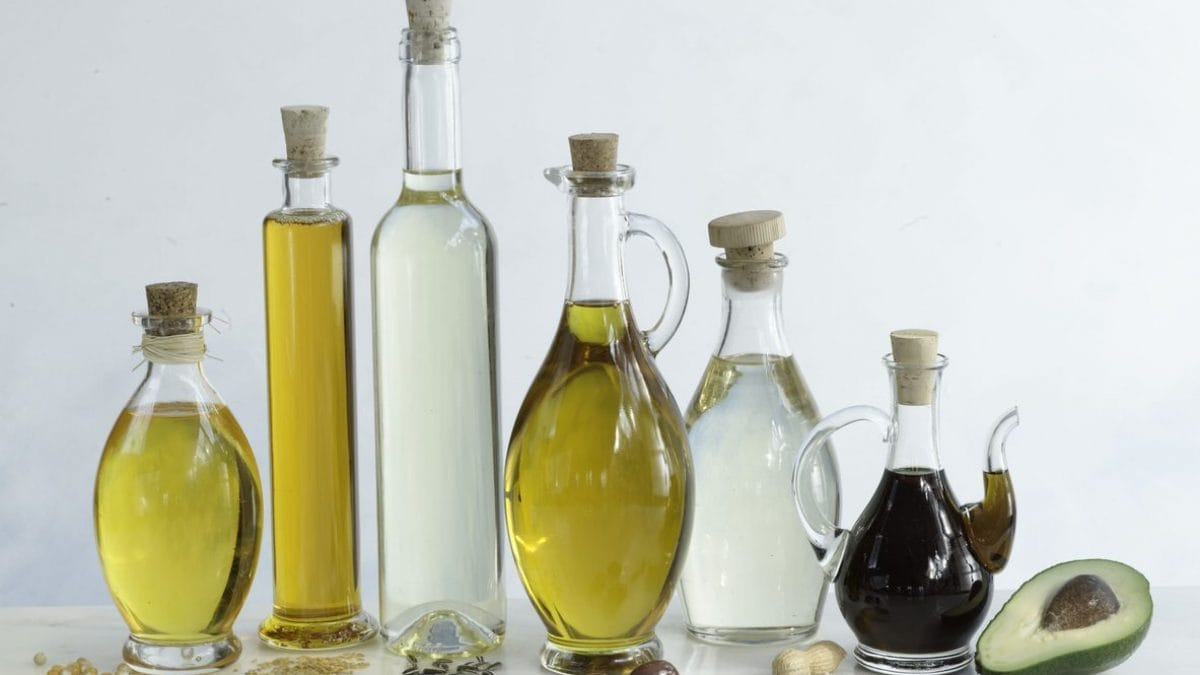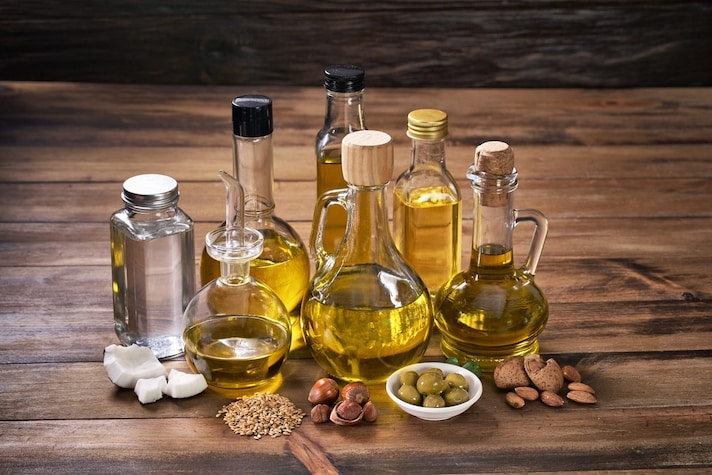
One could immediately say that "olive oil comes from the fruit (olives), while seed oil is produced by processing various plant seeds." This is correct, but not quite as comprehensive. The differences between the two aren't limited to their origin alone: the manufacturing process, nutritional profile, flavor, and culinary uses are just some of the factors to consider when it comes to oils. All that's left to do is discover what makes the two products so different.
Origin and Production Method
Let's start with the raw material: both belong to the category of vegetable fats with a fluid consistency. Seed oil is obtained by processing the seeds of various plants such as sunflower, peanut, corn, flax, and soybeans, while olive oil is derived from pressing olives, the fruit of the olive tree. The latter is produced through mechanical extraction: the olives are harvested, the pulp is pressed, and the resulting oil is then stored and bottled. Seed oil, on the other hand, can be produced through cold mechanical extraction by pressing, squeezing, and refining, or through a chemical extraction process using solvents processed at high temperatures, a method that allows for a higher yield but a lower quality of the final product.

Nutritional Profile, Taste and Aroma
The production process affects the final result, particularly the nutritional profile of the oils we use in our recipes. Olive oil, especially extra virgin olive oil, retains most of the characteristics and nutritional values of olives; this is not the case for seed oil, which, when industrially processed and in contact with chemical solvents, loses some of its nutritional properties, resulting in a less healthy product. Olive oil contains a higher quantity of monounsaturated fats, followed by saturated and polyunsaturated fats; seed oils also contain potentially unhealthy trans fatty acids, produced by refining processes. Olive oil can be fruity, bitter, or spicy: factors that depend on the variety of olives, their ripening time, the type of processing, and even their quality. Seed oil is not a single, monolithic block: its flavor, color, and more or less aromatic notes vary depending on the seed from which it is produced.

Uses in Cooking
Different oils for different uses. Olive oil is much more than a condiment: we are talking about a pillar of Italian gastronomy and the Mediterranean diet: it is used in every type of preparation, raw to enhance cold dishes, in the pan to make sauces and soffritto, in dough to soften and flavor bread, focaccia, and bases for savory and sweet pies. Seed oil, in this case too, must be distinguished based on the type of seed: some varieties, such as flaxseed, pumpkin, or soybean, have a delicate flavor that also lends itself to being consumed as a final condiment; others, such as peanut or sunflower oil, are more suitable for frying, thanks to their high smoke point that allows cooking at very high temperatures without burning, with a less greasy, crispier, and more golden result.
Differences Between Virgin and Extra Virgin Olive Oil
Supermarket shelves aren't filled with just one type of oil straight from the mill: the main distinction is between extra virgin olive oil (also known as EVO), virgin olive oil, and olive oil. Extra virgin olive oil is considered a superior product, as it must meet specific chemical and physical parameters established by European legislation (EEC Regulation No. 2568/91 and subsequent updates), including an acidity level of no more than 0.8% per 100 grams, and pass organoleptic tests, demonstrating it is free of defects. The processing method is obviously exclusively mechanical, comparable to obtaining the "juice" by simply pressing the fruit.
Virgin olive oil comes in second place, as it doesn't fully pass the tests: in this case, the acidity can reach 2%. Of significantly lower quality is oil simply called olive oil, because it is a blend of refined olive oils and virgin or extra virgin olive oil , where the proportions are not regulated, however. It must also be said that not all extra virgin olive oils are synonymous with top-of-the-line, so we suggest you read the label carefully when purchasing to evaluate the best product.

What is High Oleic Seed Oil?
We conclude with a seed oil that's different from others due to its characteristic component, and is probably still little known. We're talking about high oleic oil which, as its name suggests, has a higher content of oleic acid, a monounsaturated fat from the omega-9 family that helps lower bad cholesterol levels in the blood and is easily digestible. Use it especially for frying: it has good stability, withstanding high temperatures, and, what's more, it tends to be neutral in flavor, so it doesn't overpower the flavor of the food.
;Resize,width=767;)
